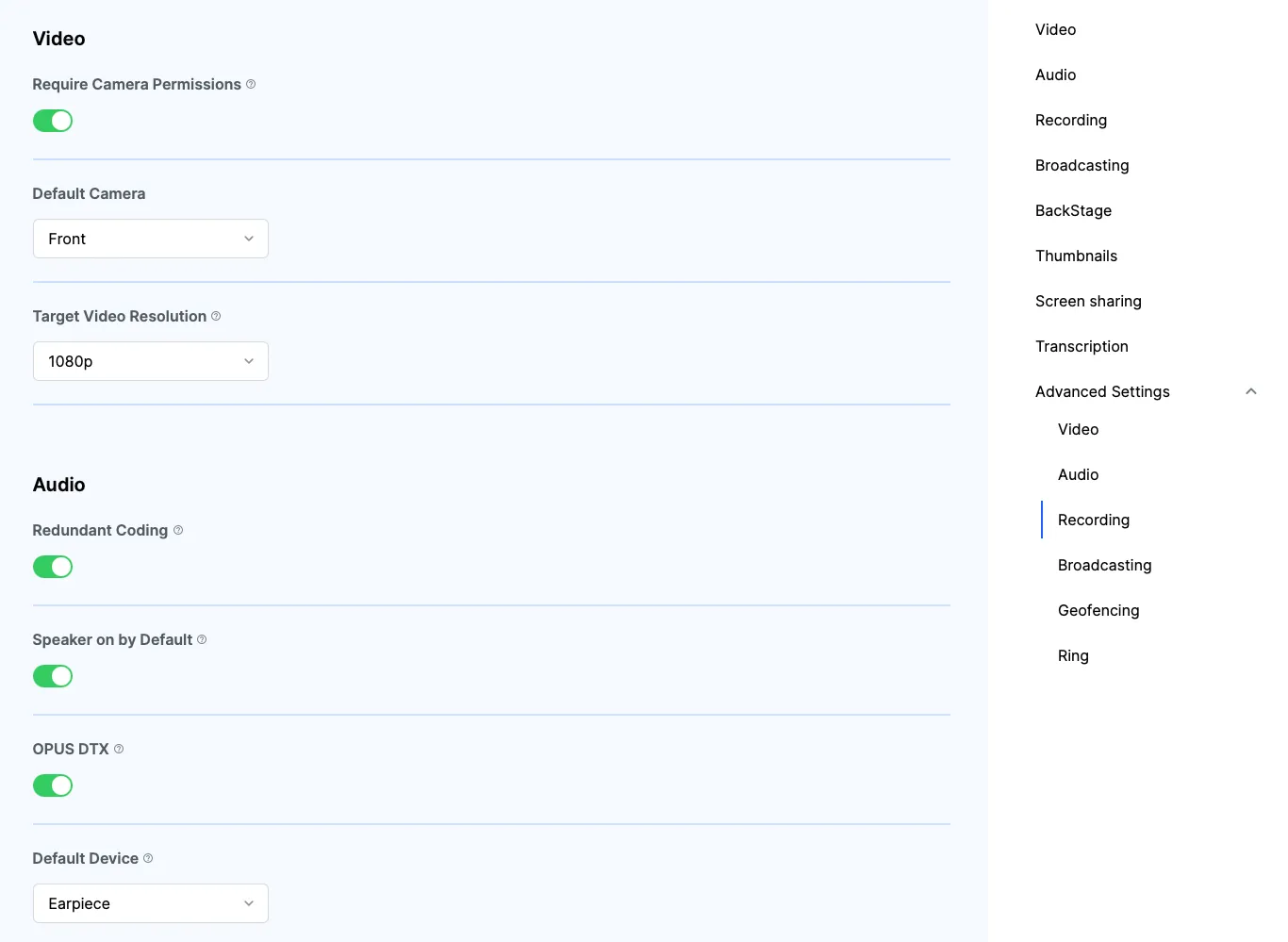final call = client.makeCall(callType: StreamCallType.defaultType(), id: '345');
await call.join(connectOptions: connectOptions);Initial call configuration
There are two ways to configure the initial call setup:
- Using the Stream Dashboard to setup the initial configuration per call type
- Passing the initial configuration in by
CallConnectOptionsparameter
Stream Dashboard
You can configure the initial call setup using the Stream Dashboard. This is useful when you want to set up the initial configuration for a specific call type. Find the call type you want to configure on the list of call types: https://dashboard.getstream.io/app/{YOUR-APP-ID}/video/call-types. Then under Video, Audio and Advanced settings sections you can set things like:
- Turn camera on/off by default
- Turn microphone on/off by default
- Set default camera facing
- Set default audio output device

CallConnectOptions parameter
Using the CallConnectOptions class you can configure the initial call setup programmatically. It provides the following options:
- Enabling or disabling the camera
- Enabling or disabling the microphone
- Enabling or disabling the screen sharing
- Setting the camera facing mode
- Setting the audio output device
- Setting the audio input device
You can provide this class as a parameter when joining a call:
Or by passing it to the StreamCallContainer widget
StreamCallContainer(
call: widget.call,
callConnectOptions: connectOptions,
...
);You can access current options by calling call.connectOptions on the Call object.
final call = client.makeCall(callType: StreamCallType.defaultType(), id: '345');
await call.getOrCreate();
final callOptions = call.connectOptions;When getOrCreate method is called, the default options will be created based on the Stream Dashboard settings.
You can then leverage the call.connectOptions to modify the default settings and pass them to the join method at the end.
call.connectOptions also has a setter but it should be used carefully. Depending on the moment in the call lifecycle, it might be overwritten by default configuration or it might be too late to apply the changes.